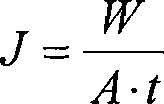Hydrophilic organic ceramic composite permeable vaporizing membrane and its preparation method and application
An organic ceramic and pervaporation technology, applied in the field of separation membranes, can solve the problems of complex preparation process, high preparation cost and high technical requirements, and achieve the effects of good selectivity and permeability, good adaptability and high separation selectivity.
- Summary
- Abstract
- Description
- Claims
- Application Information
AI Technical Summary
Problems solved by technology
Method used
Image
Examples
Embodiment 1
[0031] The microporous ceramic membrane that present embodiment uses, its main material is Al 2 o 3 . The thickness of the microporous membrane is about 3mm, and the effective area is 1cm 2 . The average pore diameter of the surface layer of this microporous membrane is about 0.5m.
[0032] The microporous ceramic membrane was treated with 0.2M sulfuric acid for 1h, then placed in a 100mL autoclave, added 2mL of butyl silicate, sealed and treated in an oven at 180°C for 2h, and then in an electric furnace at 550°C for 1h. The pure water flux of the treated membrane at 150Pa vacuum is 540L / m2 h.
[0033] The above-mentioned microporous ceramic membrane was placed in a three-necked flask equipped with a spherical condenser, 20 mL of toluene and 1 g of methacryloxy)propyltrimethoxysilane were added, and heated to reflux for 5 hours. After cooling, the membrane was removed and rinsed with toluene to remove unreacted silane coupling agent.
[0034] The microporous ceramic mem...
Embodiment 2
[0037] A microporous ceramic composite membrane was prepared by compounding an analcite microporous layer with a thickness of about 10 m on a microporous cordierite carrier. The thickness of the composite film is about 3mm and the area is 1cm 2 . The average pore diameter of the microporous membrane is about 1m.
[0038] The above ceramic membrane was treated with 0.2M sulfuric acid for 1h, then placed in a 100mL autoclave, added 4mL butyl silicate, sealed and treated in an oven at 180°C for 2h, and then in an electric furnace at 550°C for 1h. The pure water flux of the treated membrane at 150Pa vacuum is 350L / m 2 h.
[0039] The above ceramic membrane was placed in a three-necked flask equipped with a spherical condenser, and then 25 mL of toluene and 5 g of -(methacryloyloxy)propyltrimethoxysilane were added. Heat to reflux for 3 hours. After cooling, the microporous membrane is taken out, and the surface of the membrane is washed with toluene, ethanol, and water succes...
Embodiment 3
[0043] In this embodiment, a macroporous ceramic membrane (36 mm×2.5 mm, average pore diameter: 2-3 μm) is used. The ceramic film was first treated by TEOS vapor deposition method at 180° C. for 50 min, and the amount of TEOS was 5 mL. The resulting film was calcined in an electric furnace at 500°C for 5 hours. The pure water penetration rate under 150Pa vacuum is 760L / m 2 h.
[0044] The above ceramic membrane was placed in a three-necked flask equipped with a spherical condenser, and then 50 mL of toluene and 5 g of -(methacryloyloxy)propyltrimethoxysilane were added and heated to reflux for 4 hours. After cooling, the microporous membrane was taken out, and the surface of the membrane was rinsed with toluene to remove unreacted silane coupling agent.
[0045] The silane-treated macroporous ceramic membrane composite membrane was placed in a 100 mL three-neck flask, and 50 mL of 8% acrylic acid aqueous solution and 0.03 g of potassium persulfate were added. Under the pro...
PUM
| Property | Measurement | Unit |
|---|---|---|
| pore size | aaaaa | aaaaa |
| pore size | aaaaa | aaaaa |
| volume | aaaaa | aaaaa |
Abstract
Description
Claims
Application Information
 Login to View More
Login to View More - R&D
- Intellectual Property
- Life Sciences
- Materials
- Tech Scout
- Unparalleled Data Quality
- Higher Quality Content
- 60% Fewer Hallucinations
Browse by: Latest US Patents, China's latest patents, Technical Efficacy Thesaurus, Application Domain, Technology Topic, Popular Technical Reports.
© 2025 PatSnap. All rights reserved.Legal|Privacy policy|Modern Slavery Act Transparency Statement|Sitemap|About US| Contact US: help@patsnap.com

